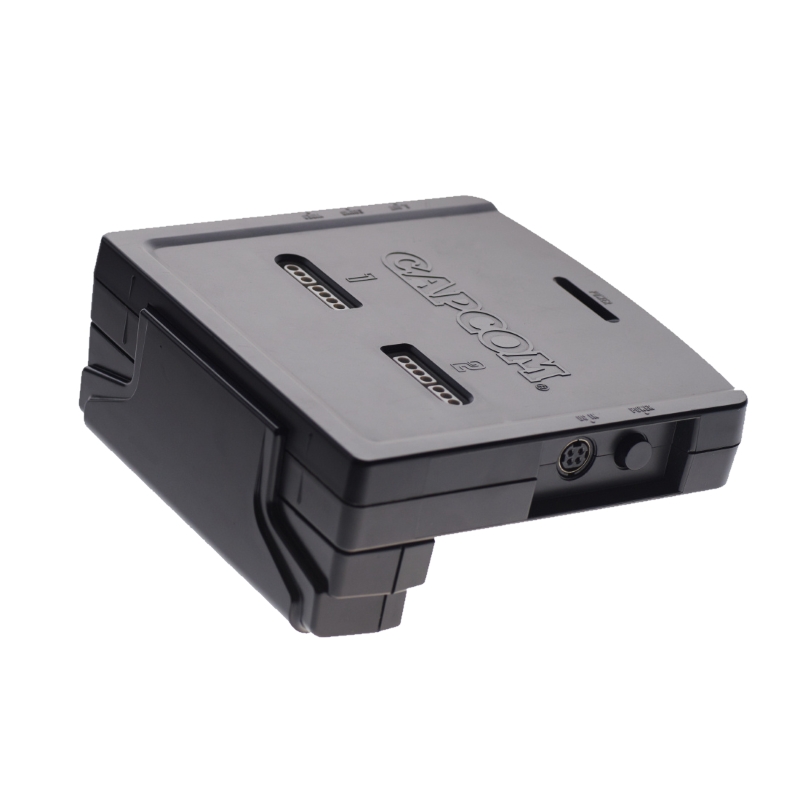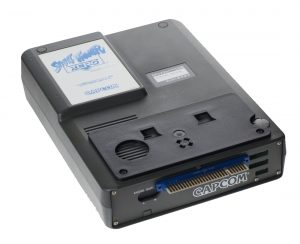|
|
|
History
Capcom is one of these companies that needs no introduction. In the nineties, Capcom was ruling the video game industry as one of the most respected game developers. With franchise such as Mega Man and Street Fighter, Capcom games were on every home system. But Capcom was not only a game developer. The company created in July 1988 their own arcade board. By 1994, they had released more than 25 games using their CPS-1 board and decided to attempt to enter the home console market.
Following in the Neg Geo AES footstep, Capcom decided to release their own version of a “consolized” arcade. The approach taken by Capcom was a bit different than what Neo Geo did. Instead of putting their CPS-1 board in the console itself and only distribute ROM cartridges for it, they decided to produce the equivalent of a SuperGun (a device that allows to connect an arcade board directly to a television), but with a few twists. The console would feature Super Famicom controller ports, allowing the use of all Super NES controllers, including their six-button joystick, the “CPS Fighter”. As “cartridges”, Capcom used their CPS-1 arcade PCBs in a special plastic shell suitable for home use. The cartridges were standard CPS-1 board with a modified connector that would restrict their use in an arcade without being modified. This also restricts the CPS Changer to use other Arcade PCB as “cartridge”.
Release
The CPS Changer was released in late 1994 as a mail order only item for ¥39,800. The package included, one CPS Fighter joystick controller and the Street Fighter II’ Turbo: Hyper Fighting.
Demise
With the release of the Sega Saturn and the Sony PlayStation at the end of 1994, the CPS Changer had some serious competition. The CPS Changer was never intended to be a competitor to Nintendo, Sega or Sony, but instead targeted a very niche market of consumers who wanted to have the true arcade experience at home. But with the release of the newest generation of console, the difference between the home version and the arcade version of games were beginning to be marginal and the games of these systems were costing a fraction of the price when compared to the CPS Changer.
But the real problem was that the console was doomed from the start as Capcom had already started to move to a new arcade board format, even before the release of the CPS Changer. The CPS-2 arcade board was released in 1993 and was an attempt by Capcom to overcome the piracy its CPS-1 board had suffered. The new board being not compatible with the CPS Changer, it was just a matter of time before no new game would publish for the home system. By 1995, Capcom published Pang! 3 which would be the last game using the CPS-1 board. In a last effort, Capcom did ports the Street Fighter Alpha from a CPS-2 boards to a CPS Charger cartridge with some compromise. This version had fewer animation frames for the characters, fewer on-screen colors, and the music and sound effects were sampled at a lower rate. The game was sold for ¥35,000, ¥15,000 more than any game on the system. The game also ended-up being the angular stone of the CPS-2 emulation. The CPS Changer version of Street Fighter Alpha was unencrypted while the CPS-2 version was. Although both ROM where different as the CPS-1 version was trimmed down, both versions shared enough similarities to offer insight on what code the encrypted version was running.
After this release, no new games were ported to the CPS Charger.
Technical Specification
- Composite video and S-video output
- Line-level mono audio.
- Super Famicom controller ports
Games
A total of 11 games were released for the console. Games were sold for ¥20,000 each, ¥38,000 for 2 or ¥55,000 for 3, the only exception being Street Fighter Alpha which was sold for ¥35,000 on its own.


